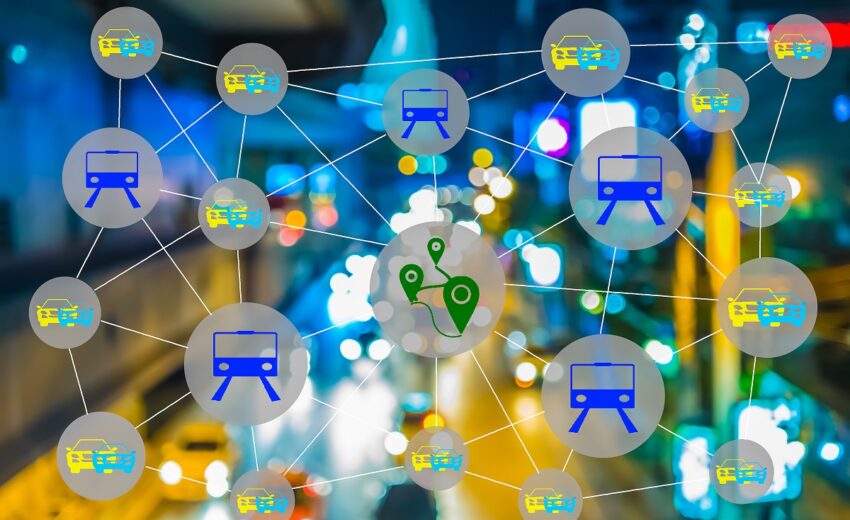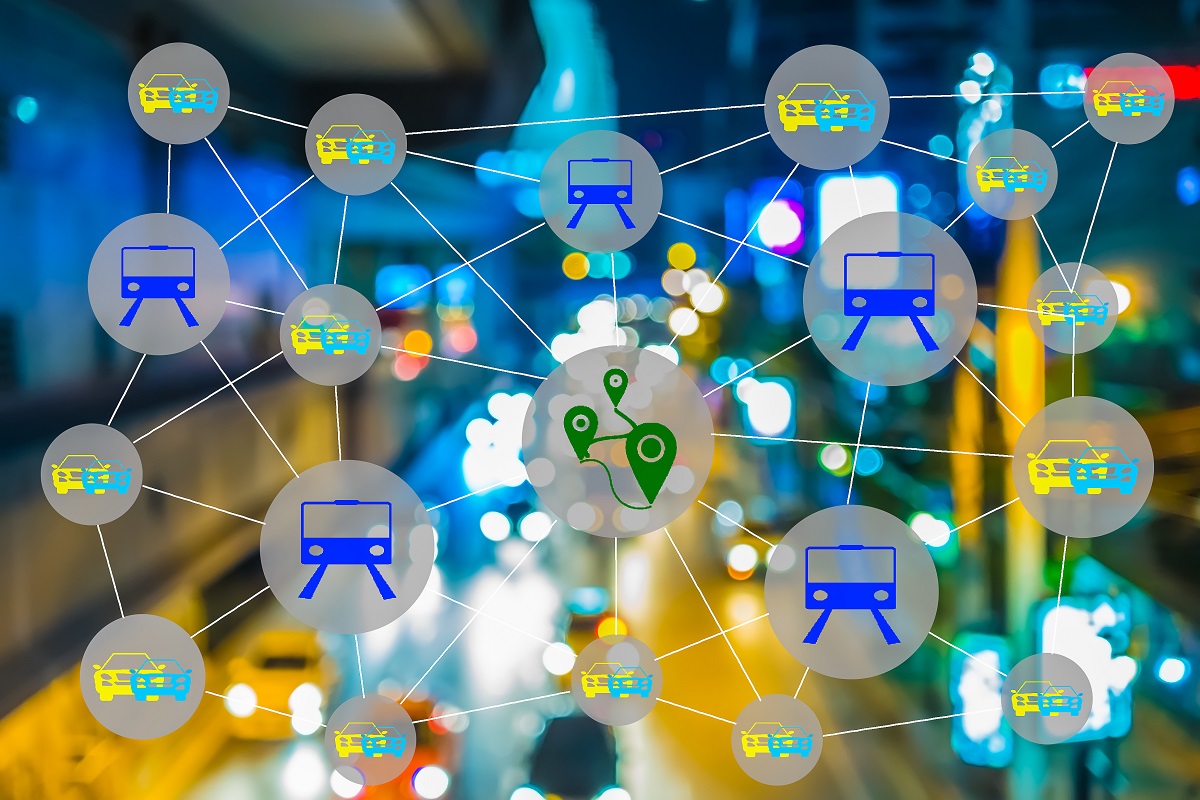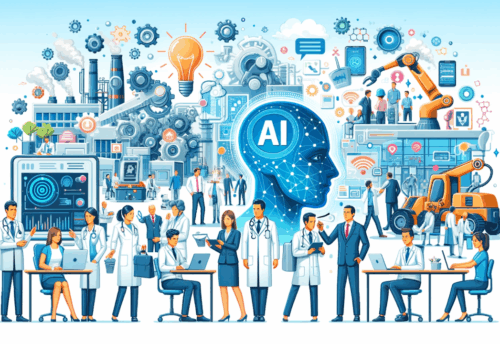
Big Data and AI In New Mobility

AI is viewed by many exclusively as a prediction technology. The availability of large, diverse, and information-rich data sets combined with the power of neural networks has been responsible for achieving incredible results even in complex, multi-faceted situations. Every aspect of new mobility has benefited from AI’s prediction power. The navigation abilities of autonomous vehicles and the ability of on-demand mobility services companies to provide their drivers with the best route between a customer’s trip origin and desired destination wouldn’t have been possible without this predictive power. New mobility will continue to reap even more impressive rewards from the use of AI by combining its proven prediction power with the reasoning capabilities of intelligent systems. Getting there will be accomplished as new mobility’s AI systems play three roles.
At their core, AI systems consist of predictive models that are typically developed using a machine learning approach, such as those performed by a neural network, and reasoning models that encode symbolic knowledge. The latter are preferred for their ability to explain their conclusions. For example, a model that predicts when a vehicle’s electrical system may fail can be developed by combining data with a neural network, whereas a model that explains the cause of the failure will require a symbolically represented model of the vehicle’s electrical system. Sometimes the two model types are used in tandem on the same problem, as was the case with the diagnosis example, and others are used by the same system on different tasks. For example, our firm has developed a system that uses a neural network-based model to predict the number of times the members of a population segment will visit a grocery store during a week, and a reasoning model with symbolic knowledge to determine why a brand’s store will be visited out of convenience, and why out of brand affinity.
New mobility creates data-rich environments. The data is generated by:
- The vehicle’s supply chain. This includes all the data generated during the vehicle’s design, test, and manufacturing phases. It includes the data generated by the OEM and each of its partners. It encompasses data about each software and hardware component incorporated into the vehicle and enables the creation of a complete “component genealogy,” as well as of various digital twins. This data is particularly important for the creation of predictive failure and performance models.
- The operating vehicle. This is the data captured from the vehicle’s sensors during each trip the vehicle takes, the vehicle’s configuration data (some of which are coming from the automaker and others are set by the driver), the vehicle’s operating history and performance, etc. These may be private vehicles, government vehicles, and vehicles used by public transportation agencies.
- The transportation infrastructure where the vehicle operates, i.e., the bridges, roads, traffic lights, and toll stations, all of which are becoming increasingly instrumented. Additional relevant data may also be generated by the civic infrastructure, e.g., street cameras, and drone cameras, as well as pedestrians and micromobility vehicles.
- The vehicle’s occupants. This includes each passenger’s profile, infotainment choices, details about each trip, e.g., origin, destination, weather conditions, the data captured by the cabin’s sensors, the digital assistant queries, etc.
- Various data services providers. This may include weather, traffic, mapping data, and entertainment content. It will also include data captured by telcos as well as first-party data captured by corporations through their mobile applications.
While not all of these data sources are simultaneously accessible and some of them may not be readily fused due to strict privacy requirements, this data when utilized by the right AI systems will play three distinct roles. Each role will emerge over time. The timeline of this sequence corresponds roughly to the three phases of new mobility.
Role 1: Big data and AI as enablers. Data and AI are enabling the three key efforts associated with new mobility: autonomous vehicles, on-demand mobility services, and Software-Defined Vehicles. Autonomous vehicles be it robotaxis and shuttles, goods delivery vehicles for groceries or packages, and specialized vehicles for applications ranging from street sweeping to security monitoring wouldn’t have been possible without AI. At the center of the data fusion and path planning and execution operations used by autonomous vehicles are complex AI systems. Variants of these systems are enabling the ADAS components of the vehicles sold by automakers today making them safer than previous-generation cars.
The effortless convenience we associate today with on-demand mobility services is only possible because of data and AI. There are several processes that are enabled by the predictive models and reasoning functionality of the AI applications that mobility companies use. Some applications are extremely complex. For example, trip planning and optimization must consider what is being delivered (people, groceries, restaurant orders) together with the particularities of every region where the company operates, e.g., traffic infrastructure, and traffic conditions. The fleet management application must determine when and where to refuel or recharge each vehicle in the fleet. The driver assignment process must consider the customer experience by providing each customer trip request with the right approximate ETA together with driver and vehicle characteristics. The application responsible for maximizing the fleet’s uptime must determine when to proactively maintain each vehicle to optimize its performance.
The Software-Defined Vehicles that are being introduced by incumbent and newcomer OEMs already incorporate AI applications. The ADAS components of these vehicles that enable L2-L3 driving automation wouldn’t have been possible without the use of AI. The battery management systems of the newly introduced electric vehicles utilize AI. In-cabin conveniences such as voice assistants are driven by AI. Several additional opportunities exist for AI to become an even bigger enabler in Software-Defined Vehicles, including in digital twin models, helping the OEM understand how each vehicle’s occupants use the cabin, and helping the owner understand the vehicle and its capabilities to help them personalize it.
Role 2: Big data and AI as differentiators. The most complex set of applications will be needed when organizations decide to use data and AI to differentiate themselves from their competitors. This differentiation will prove important as new mobility advances toward its third phase. During that phase, many activities involving movement will be offered as a service. A simple example of the advantages offered by the ability to clearly differentiate can be seen in today’s airline industry. Consider the differences between Southwest, and United Airlines. They both fly the Boeing 737, but they use data and AI to effectively differentiate themselves in the eyes of their target customers, particularly in the markets they both serve. Because they are targeting different population segments, they configure their 737s differently, price their routes where they use these aircraft differently, have different uptime targets and revenue-mile goals for the aircraft, and operate using different models that offer different customer experiences.
Similarly, companies involved in new mobility can use their data and AI advantage to establish differentiators. For mobility services companies the differentiation may come in the form of lower prices without impacting profitability, faster response time because of optimized propositioning of robotaxis, or even the willingness to undertake certain driver-related risks that the competition is unable to match. For logistics companies, differentiation may mean visibility across the entire delivery chain and dynamic reconfiguration to deal with events ranging from natural phenomena, e.g., a flooded highway, to manmade ones, e.g., a workers’ strike or a truck accident.
Role 3: Big data and AI as monetizers. Software-Defined Vehicles enable OEMs and their ecosystem partners to offer new services in and around the vehicle that enhance the vehicle’s capabilities and the customer experience. Each service will be proposed to the vehicle’s owner, or even to individual occupants, using AI-based recommendation systems that will be driven by their profiles. A profile will be generated via a combination of customer-provided data and data that is automatically inferred by the OEM’s AI systems. The services will be delivered using Over The Air (OTA) updates and monetized using a variety of models including transaction, subscription, advertising, and loyalty. Monetization will enable OEMs and their partners to capture a larger percentage of a customer’s lifetime value over the life of the vehicle across all its owners.
The same approach can be used by on-demand mobility services companies to derive additional revenue during each trip while enhancing the customer experience. Monetization opportunities may be as simple as offering paid entertainment content recommendations to the ride-hailing passenger, and as complex as recommending a boxed meal to be consumed during a flight, ordering it, and picking it up just before picking up the passenger to drive them to the airport.
We are impressed with the capabilities of AI systems that are announced daily. In new mobility, we are just starting to scratch the surface of what is possible with the prudent use of the generated data and the application of AI. The results achieved to date point to an exciting future that will be possible with hard work, perseverance, but also vigilance against the unwanted implications of applications that are released without serious forethought.




Leave a Reply